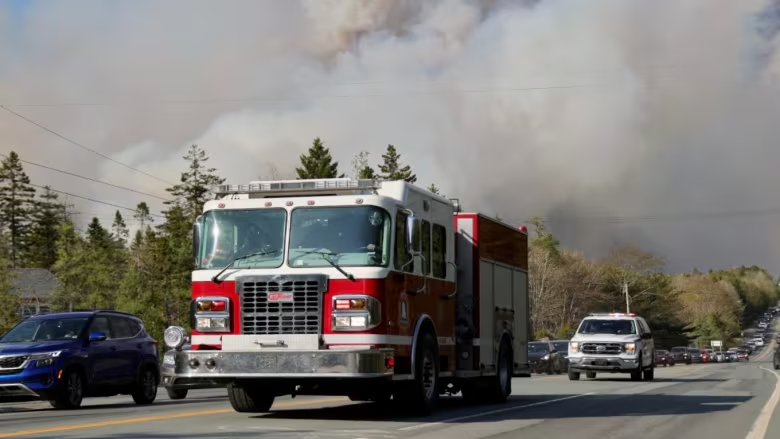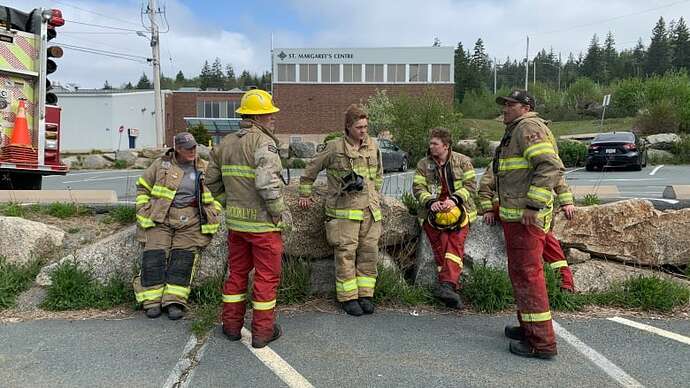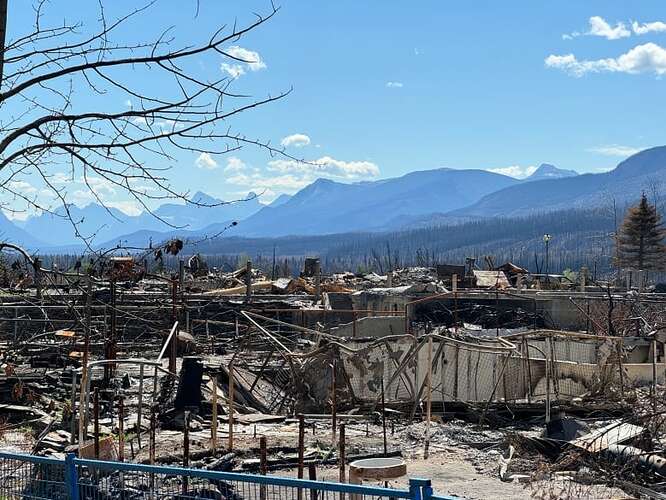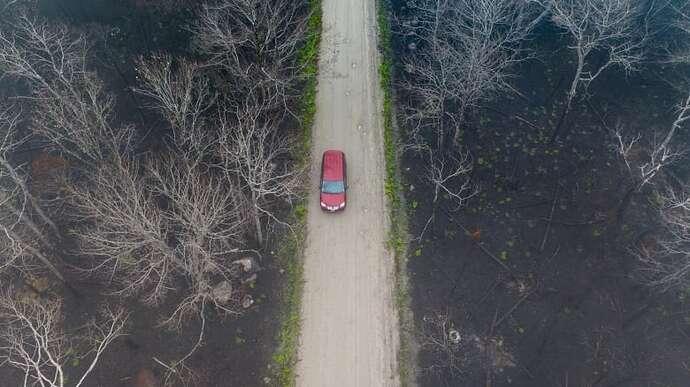Firefighter Joe Triff thinks back to last year’s devastating wildfires, which forced thousands to evacuate Halifax’s suburbs and then reduced more than 100 homes to smoking, black holes.
He remembers the fear his colleagues felt — some desperately trying to push back flames from their own properties.
The fire that broke out on May 28, 2023, in Upper Tantallon, 30 kilometres from downtown Halifax, burned more than 900 hectares, forced more than 16,000 people to evacuate and destroyed 151 homes.
“The level of destruction, the speed that the fire was moving, the amount of people trying to be evacuated, were all extreme compared to what we’ve dealt with in the past,” said Triff, vice-president of the Halifax Professional Fire Fighters Association and the Atlantic Provinces Professional Fire Fighters Association.
A new report from Halifax Regional Fire and Emergency sheds light on what firefighters faced over the nearly three-week operation to put out the fire, and points out how the urban, structural firefighters didn’t have the training, experience or equipment to deal with a wildfire.
Structural firefighters are trained to combat fires in enclosed spaces, like homes, commercial buildings, industrial facilities and public infrastructure, versus their wildland counterparts, who work in forests and grasslands.
Experts say that wildfires will encroach on urban areas more often, with climate change and urban sprawl, and municipal firefighters across the country may not be prepared.
Volunteer and paid firefighters from across Nova Scotia responded to the Upper Tantallon wildfire. (CBC / Radio-Canada)
‘Intersection of hazards’, says chief
“That risk is high, and it’s getting higher today than perhaps in previous years,” said Ken McMullen, president of the Canadian Association of Fire Chiefs. “We’re calling it the intersection of hazards, right? Things are just expanding beyond our normal borders of where municipalities used to be involved.”
We don’t have to look far in the past for examples. McMullen pointed to the July wildfire that razed one-third of the town of Jasper, Alta., the 2023 wildfires that destroyed 130 properties in B.C.'s Shuswap region, and the 2021 fire that burned Lytton, B.C., to the ground.
-
In Depth
A wildfire outside Halifax burned these trees. Now they’ll help build homes -
Graphics
Wildfire season is here. See where today’s hot spots are
Last year was the worst for wildfires on record, and those who study climate change and fires don’t expect much relief going forward.
“We’re seeing more and more communities impacted. There’s more development on the landscape, but there’s also more fire,” said Mike Flannigan, professor of wildland fire at Thompson Rivers University in Kamloops, B.C. “And as we continue to warm, we’re going to see more fire.”
Cabin Creek neighborhood in Jasper, Alta., on Aug. 19. (Rick Bremness/CBC)
Though provincial governments are in charge of funding and deploying wildland firefighters, and they often take the lead in these situations, municipal fire departments also must respond when a wildfire moves into an urban area.
The types of firefighting are very different, down to the protective equipment they wear and the vehicles they drive, said McMullen — and their tactics, training, and expertise are both needed. But he said more co-ordination is required between the two services.
McMullen said the greatest danger for wildland firefighters are falling trees, a hazard that recently killed a 24-year old firefighter in Jasper. But municipal firefighters are trained in things like motor vehicle collisions and water rescues, and may not know what to look for.
‘Not equipped to deal with an emergency’
Halifax Regional Fire and Emergency’s report, presented to municipal council on Tuesday, mentioned injuries due to improper footwear, firefighters working in soaked clothes, and concerns over the personal protective equipment that was available on site.
‘We haven’t been given any reason to think that anything would be different if another incident took place tomorrow,’ Joe Triff says. (Cristian Monetta/CBC)
“It has a negative impact psychologically when you’re not equipped to deal with an emergency,” Triff said. “[We] were not provided with adequate footwear to be in the woods for 16 hours, and beyond that, to do it day in and day out.”
Halifax Fire’s report gave 56 recommendations for the service, including the creation of a major event response plan, and changes in procedure in areas such as evacuation, safety, accountability, water supply, public information and telecommunications.
If another wildfire were to happen tomorrow, Triff says he and other union members don’t feel like they’d be any more prepared.
But Halifax Regional Fire and Emergency’s newly hired wildfire mitigation program manager says she — and others — are working on it.
“There’s no way we could ever be prepared for what we faced last season,” said Kara McCurdy. “But certainly there’s only improvements that can be made.”
Woods blackened by the Upper Tantallon wildfire are seen on June 28, 2023. (Shane Hennessey/CBC)
McCurdy said Halifax Fire is working on increased training and better equipment, conducting community risk assessments, implementing earlier detection methods like fire scope cameras, and is purchasing three wildland fire trucks.
She said a new wildfire strategy is in the works, and she’s hoping it will be shared with firefighters soon and be made public in the fall.
Kara McCurdy’s position of municipal wildfire mitigation manager is the first of its kind in Nova Scotia, and perhaps the country, she says. (Cristian Monetta/CBC)
In April, Ottawa earmarked up to $800,000, on top of $400,000 last year, to help the International Association of Fire Fighters deliver a training program to increase the capacity of structural firefighters across the country.
Triff said the program, called Responding to the Interface, will be coming to the Maritime provinces this fall, and training more than 20 firefighters, who will then go back to their departments and train their colleagues.
He said as firefighters face new challenges, he hopes for faster progress.
“[I’m] worried for my kids’ future … you know, we’ve got an increase in hurricanes and floods and wildfires, and everything seems to be a very reactive approach rather than a proactive approach.”





